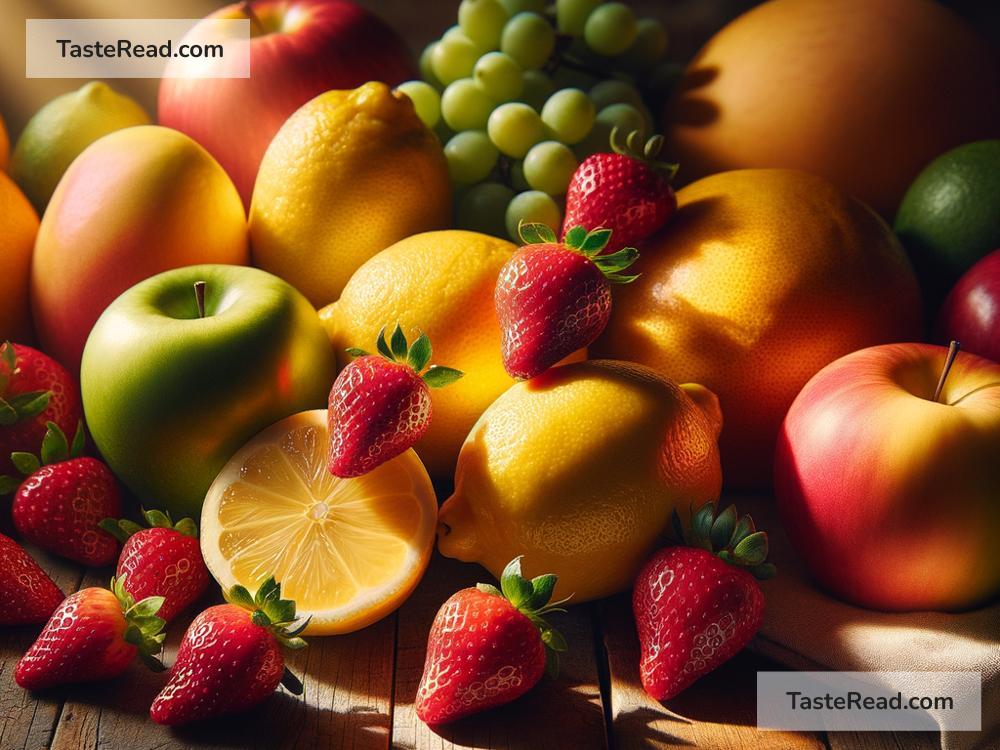Why Some Fruits Taste Sour and Others Sweet
Have you ever wondered why fruits can taste so different? Some fruits, like mangoes and bananas, are sweet and satisfying, while others, like lemons and cranberries, are sour and tangy. The difference in taste is actually quite fascinating and comes down to science—specifically, the balance of chemicals and compounds inside the fruit. Let’s explore why some fruits taste sour while others taste sweet in a simple way!
What Makes Sweet Fruits Sweet?
The sweetness in fruits comes mainly from sugar. Fruits naturally produce sugars as they grow. These sugars include glucose, fructose, and sucrose. Plants create sugar through photosynthesis, a process where they use sunlight to turn water and carbon dioxide into energy. This sugar is stored in the fruit, making it sweeter as it ripens.
When you bite into a sweet fruit like a ripe strawberry, grape, or peach, your taste buds detect the sugar, which sends a signal to your brain saying, “This is sweet!” This happens because your tongue has special sensors for sweetness.
Sweet fruits are often ones that have ripened for a long time. As fruits mature, their sugar levels increase, while their sourness (caused by acids) tends to decrease. That’s why an unripe banana tastes bland or even bitter, but a ripe banana is soft and sugary.
What Makes Sour Fruits Sour?
Sour fruits get their tangy taste from acids. The main acid found in fruits is citric acid, but some fruits also contain malic acid, ascorbic acid (vitamin C), or tartaric acid, among others. These acids create a sour flavor that your taste buds pick up on.
For example, lemons and limes are packed with citric acid, which gives them their strong, puckering taste. When you eat a lemon, your tongue detects the acid and sends a signal to your brain that says, “This is sour!”
Fruits that are sour often have lower sugar levels or a higher concentration of acid. This is why eating an unripe fruit can feel sharp and sour, even if the ripe version of the same fruit is sweet. The sourness is nature’s way of saying the fruit is not ready to be eaten just yet!
The Balance Between Sweet and Sour
Some fruits have both sweetness and sourness, and their taste depends on the balance between sugar and acid. For example, oranges, pineapples, and cherries can be sweet with a slight tang of sourness. The presence of both sugar and acid makes these fruits taste “complex” and often more refreshing.
This balance is also why cooking or processing fruits can change their flavor. Adding sugar to sour fruits (like making lemonade) can tone down the acidity and make them taste sweeter. Similarly, drying fruits like apricots or figs concentrates their sugar, making them taste far sweeter than their fresh form.
Why Do Fruits Taste Different?
You might be wondering why some fruits focus more on sugar while others focus more on acid. The answer lies in evolution and survival.
Fruits exist to help plants reproduce. Inside almost every fruit are seeds, which need to be spread so new plants can grow. Plants evolved to make their fruits appealing to animals, so these animals would eat the fruit and carry the seeds to new places in their droppings.
Sweet fruits are especially appealing to animals, including humans, because sugar provides energy. Many plants “want” their fruits to be eaten when they’re ripe, so they make them sweet and delicious.
Sour fruits, on the other hand, often signal to animals that they are not ready to be eaten yet. The plant may want the fruit to stay on the tree longer to let the seeds fully develop. Sourness can act as a warning: “Don’t eat me yet!”
Some sour fruits, like lemons, may also use their tangy taste for protection. Their strong flavor discourages many animals from eating them, keeping the seeds safe until it’s time for the plant to reproduce.
Why Do We Enjoy Both Sweet and Sour Fruits?
Interestingly, humans have grown to enjoy both sweet and sour fruits. Sweet fruits, like grapes and watermelon, satisfy our craving for sugar and make us feel good. Sour fruits, like limes and cranberries, add variety and can even make dishes taste more exciting.
Our love for different flavors has also inspired us to combine sweet and sour fruits in recipes, like mixing pineapple into a savory dish or squeezing lemon juice onto fish. These combinations bring a unique balance that makes food more interesting.
Additionally, sour fruits are rich in acids like vitamin C, which are good for our health. Over time, humans learned that eating sour fruits not only tastes good but also helps keep us strong and healthy.
Conclusion
The sweetness or sourness of fruits comes from their natural balance of sugar and acids. Sweet fruits are loaded with sugars, while sour fruits are packed with acids like citric acid. Some fruits are a mix of the two, creating a delicious balance that many people enjoy.
Whether you prefer sweet fruits like mangoes or sour ones like lemons, each fruit has a unique taste that plays a role in nature. By understanding why fruits taste the way they do, we can appreciate the amazing science behind every bite we take. So next time you enjoy a piece of fruit, think about the incredible work nature has done to make it delicious!


